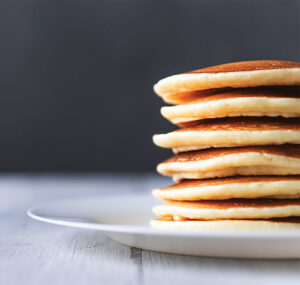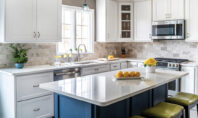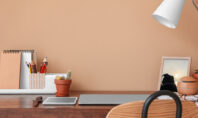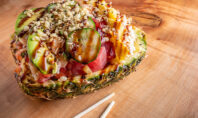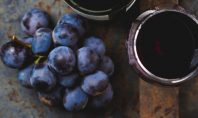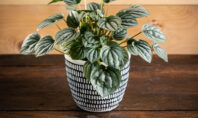Cooking 101: Pancakes
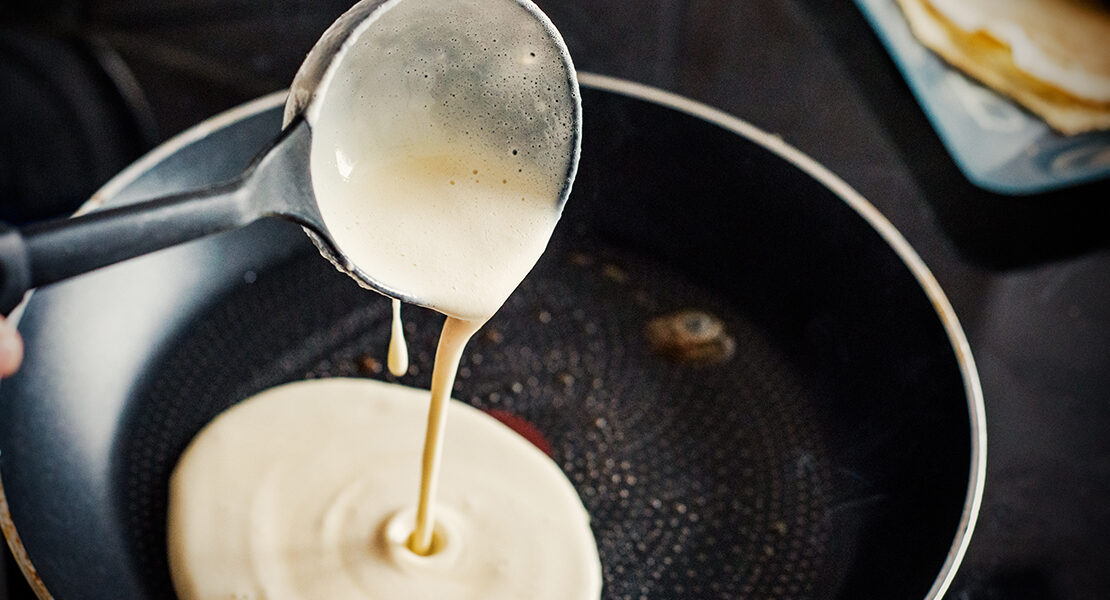
Ditch the Mix and Go For Scratch
Pancakes, the iconic comfort food of the American breakfast table – based on my personal preferences and observations at diners, not a Gallup poll – combine friendly familiarity with ever-evolving variations based on batter enhancements and multitudinous toppings. They also offer home cooks numerous advantages: Easy-going preparation eliminates the need to get dressed and drive to a dining destination; they’re faster and less complicated to make than cookies or cakes and offer equivalent indulgence; the promise of pancakes have a near-magical ability to rouse kids out of bed and arrive at the table with smiles on their faces.
“Pancakes are one of my favorite food groups,” says Christopher Heath, Corporate Chef for Paxos Restaurants. As such, he ensures that brunch menus at sister establishments blue grillhouse, Melt and Torre feature such appropriate staples as vanilla buttermilk pancakes, ricotta pancakes and cornflour pancakes, respectively, all presented with agreeable condiments. Top Cut Steakhouse goes savory by occasionally featuring buckwheat blinis with caviar on the starters menu. “There’s definitely a science behind pancakes, and there are many factors that weigh in to making the perfect pancake. Really, they’re so simple. It’s just a matter of making sure the conditions are right and that you follow your recipe.”
All Rise
First, among the all-important conditions, is making sure the baking powder is fresh. “If you’re not a baker or go through your cupboards regularly, that could be part of your downfall,” Heath explains. Next, for traditional pancakes, he prefers to use buttermilk, which has a higher acidity than whole milk or low-fat milk – and that activates the baking soda or baking powder, which is necessary for the pancakes to rise. (Note: Baking powder contains baking soda.)
Temperature Matters
Eggs, an essential ingredient, should be a room temperature. While some cooks swear by separating the eggs and beating the whites until fluffy, Heath – who has tackled every variation imaginable – views this step as unnecessary. (His one exception being buckwheat blinis because of a textural difference when used in a savory dish.) Milk or buttermilk can be warmed gently in the microwave just to take the chill off. This is vital because when using melted butter as the element of fat, cold eggs and milk will cause the butter to seize and ruin your efforts.
Details, Details
Resist the temptation to prepare pancake batter the night before for the sake of efficiency in the morning. Fresh batter activates quickly and needs to rest only a few minutes. Heath notes that the longer it rests, the tougher the pancakes. And be sure not to over mix the batter: it doesn’t need to be super-smooth and a few little lumps or streaks are fine.
The chef recommends using a nonstick griddle pan, which requires no greasing. A two-burner version accommodates a larger batch size. His personal preference for dishing them up is on a first-come, first-served basis as even the lowest setting on a home oven is still too high to prevent the
pancakes from drying out. However, if your stove includes rear vents, turn on the oven and place a plate of reserved
pancakes at the rear of the cooktop to capture the benefits
of this gently warmed air.
Pancakes cook best at medium or medium-high heat, depending on the settings of your cooktop. Consider the
first pancake as a test of the right cooking temperature.
To transfer batter to griddle, use a large kitchen spoon or small ladle, about a 2 to 3 ounces volume. When bubbles appear on the top, they are ready to flip, preferably with a suitably sized spatula. Just don’t keep poking at them – though it is not a tragedy if one of them breaks. And flip them only once.
For additions such as chocolate chips or blueberries, the easiest way to maintain consistency and control is by placing these tasty morsels on top surface prior to flipping.
Heath, experienced in running a child-friendly home kitchen, offers one final comment: “If you do this with your kids, it’s a great activity. It’s so simple, there’s nothing to it.”
CHEF HEATH’S
buttermilk pancakes
INGREDIENTS
2 eggs, room temperature
2 cups buttermilk, warm
1 tsp. salt
1/2 cup sugar
1 T vanilla
2 T baking powder
3 cups flour
1/2 cup melted butter
DIRECTIONS
In a medium mixing bowl, mix together the eggs,
buttermilk,salt, sugar and vanilla with a whisk.
Add the dry ingredients and melted butter then
gently mix. Let stand for 5 to 10 minutes. If too thick,
adjust consistency with buttermilk.
Using a nonstick griddle, cook the pancakes on
medium heat until golden on each side.
Optional additions: Blueberries or chocolate chips
Variations: Substitute half of the flour with corn
flour or masa flour, then add 1 extra cup of milk;
add cinnamon or pumpkin spice to the batter
YIELDS 12 LARGE PANCAKES
Recipe courtesy of Christopher Heath, Corporate Chef for Paxos Restaurants

